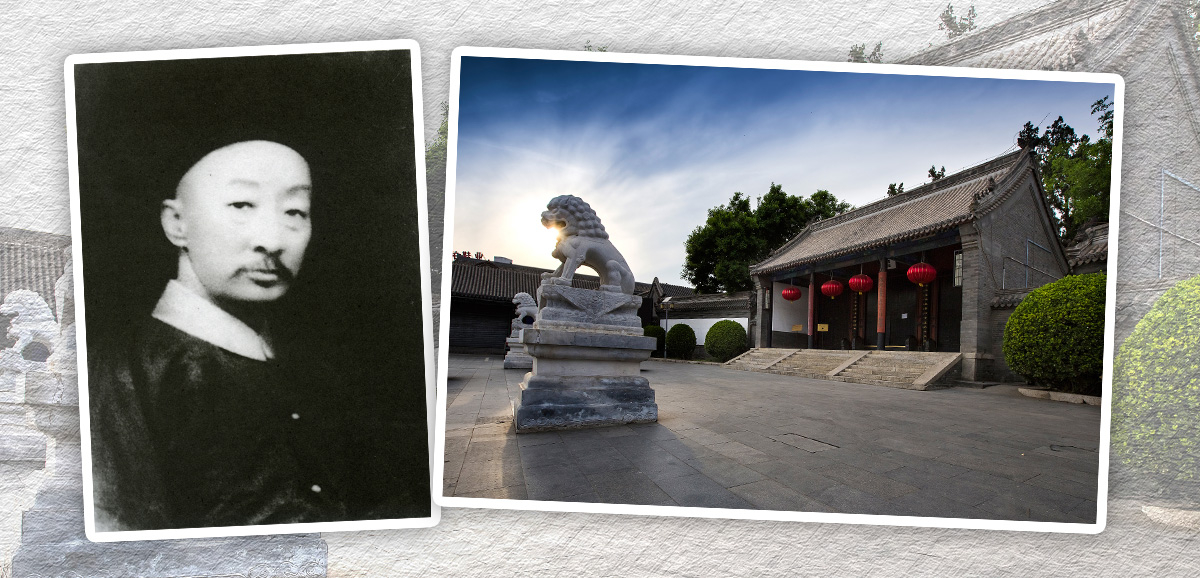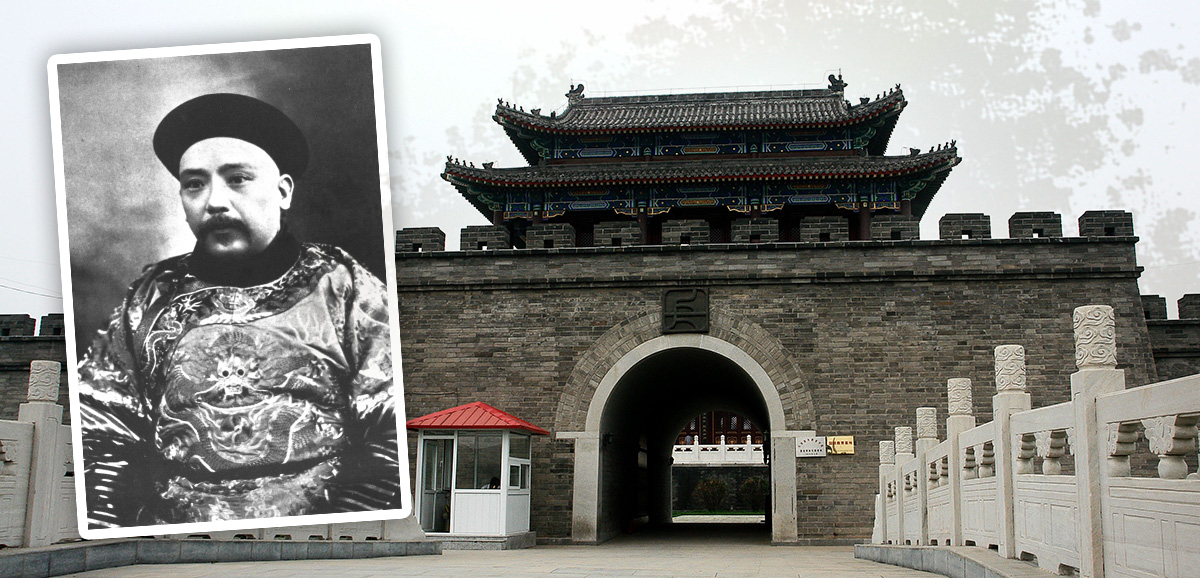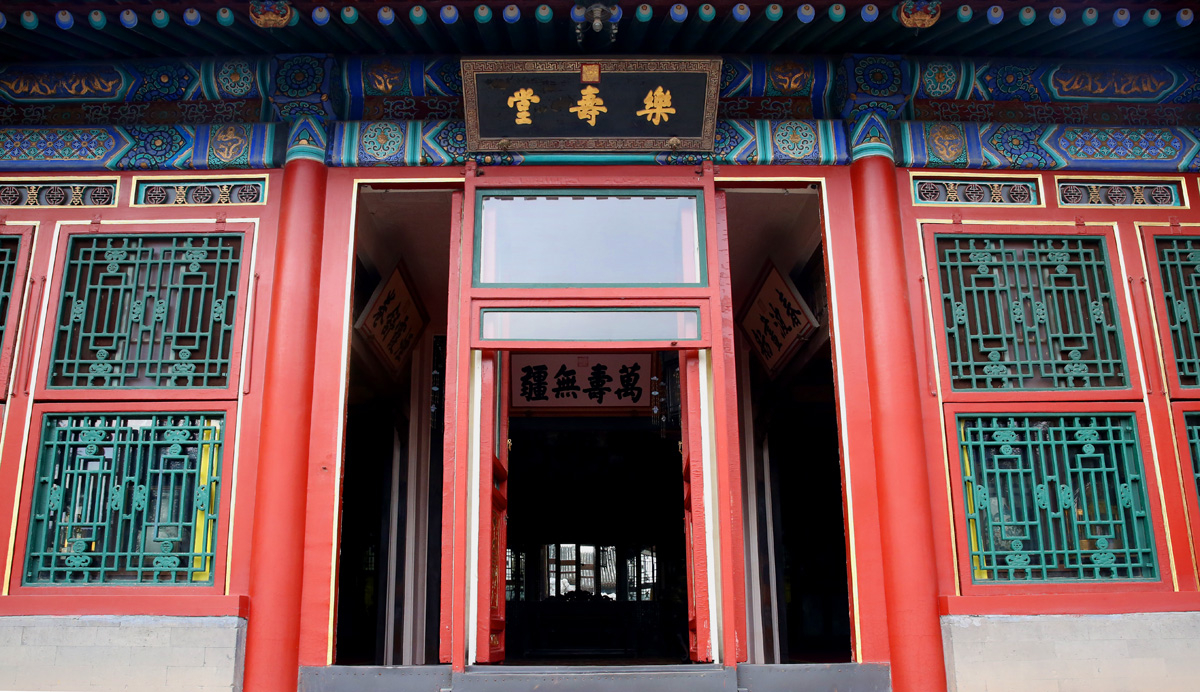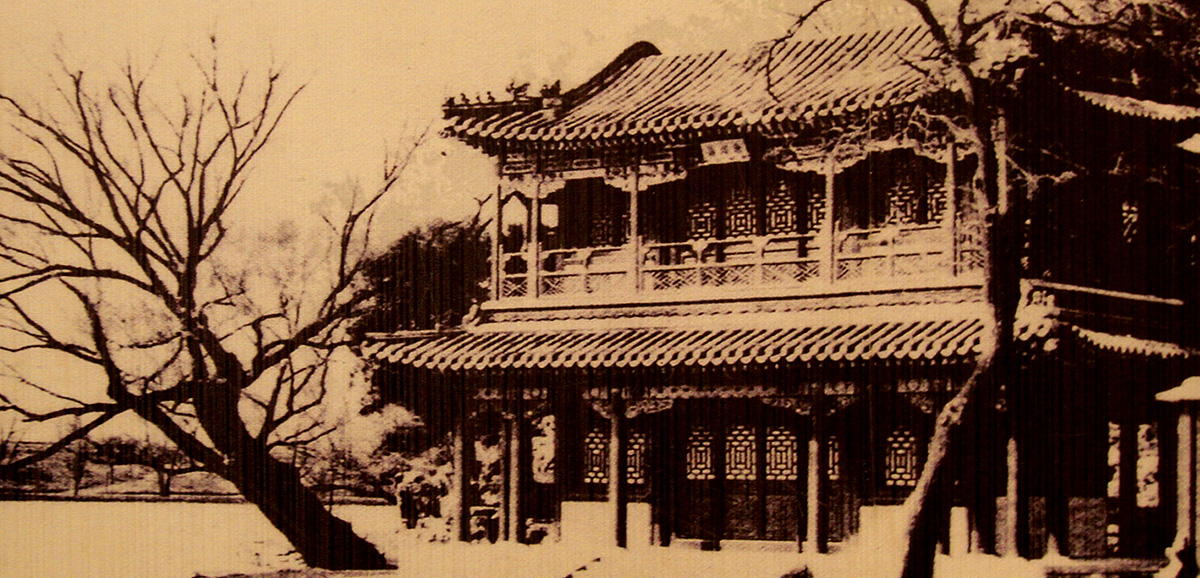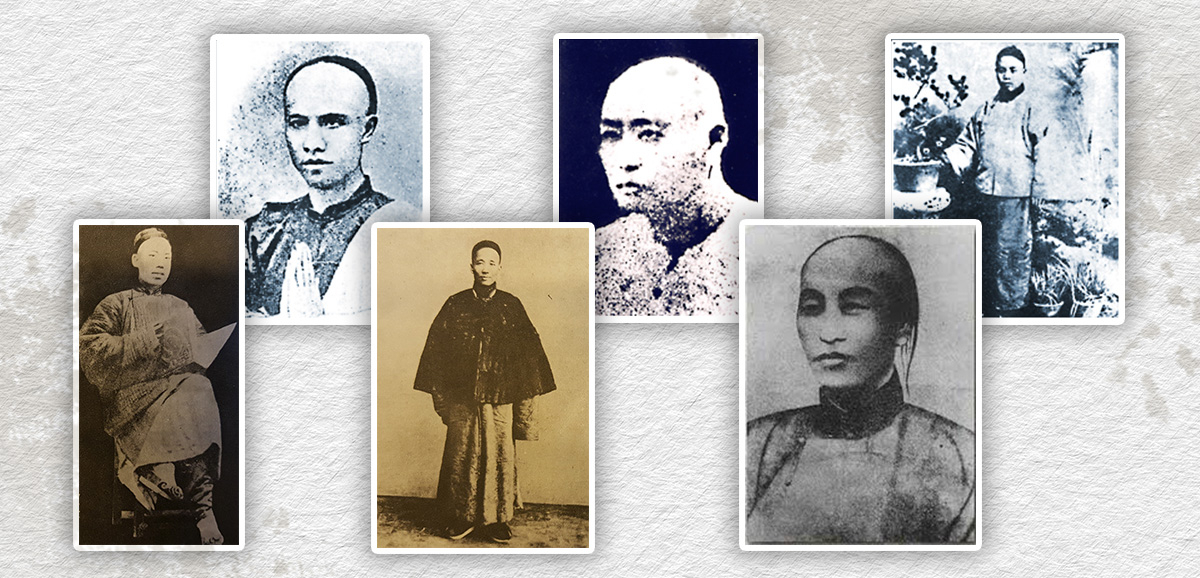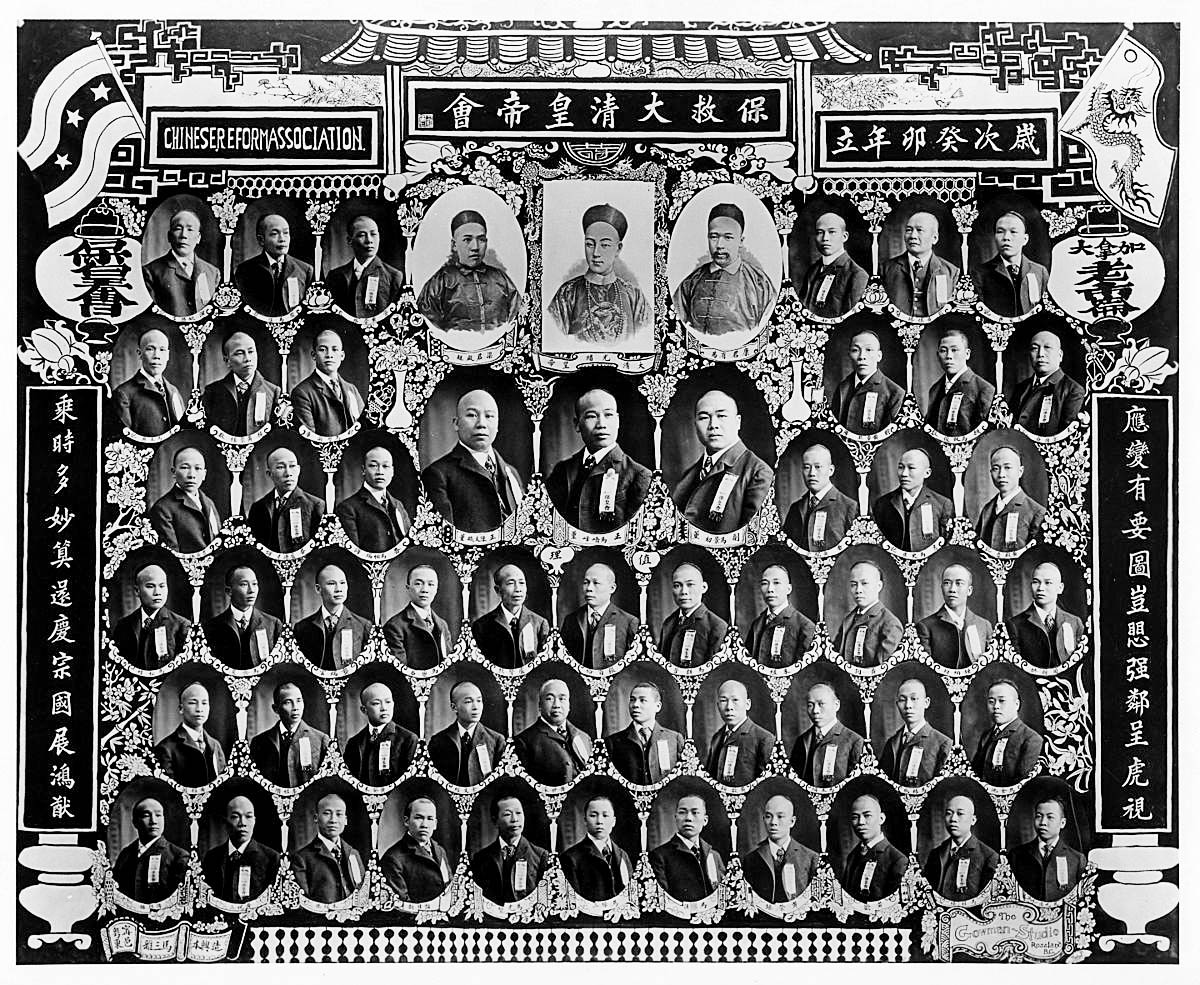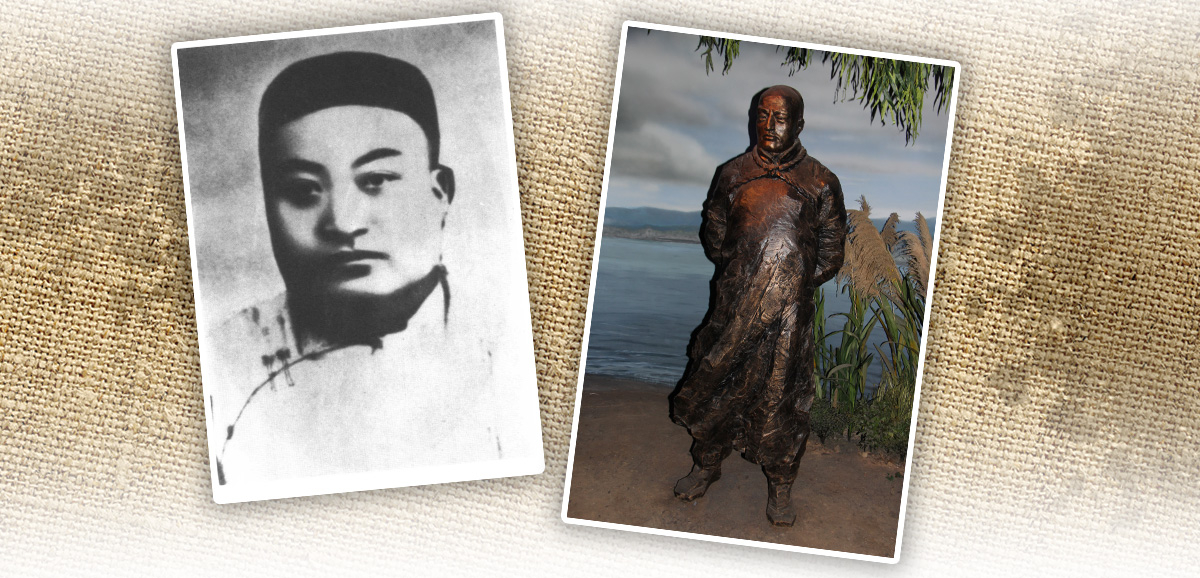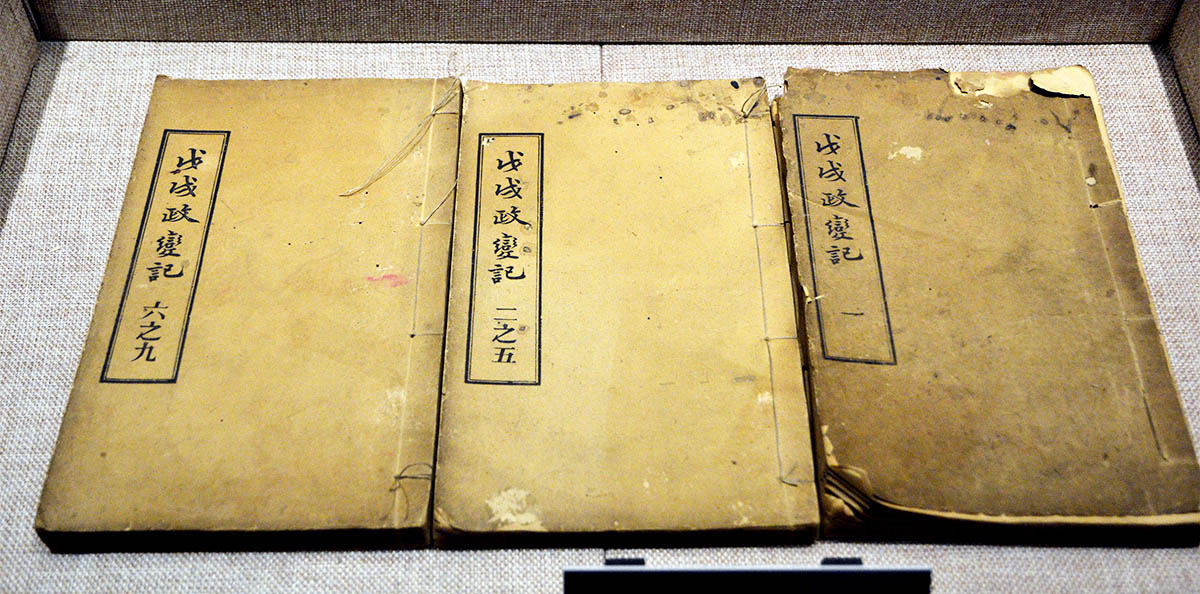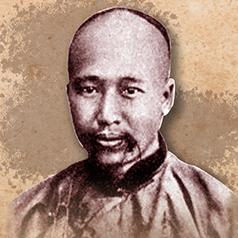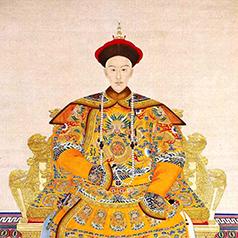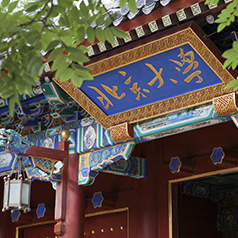During the Hundred Days’ Reform, the Empress’s Faction (后黨) - supporters of Empress Dowager Cixi (慈禧太后) - still held the reins of military and political power. As the reform progressed, the Empress’s Faction became convinced that Kang Youwei (康有爲) and Liang Qichao (梁啓超), the leading reformers, merely preserved China but not the Qing regime. Thus, they were staunchly opposed to it. Barely five days into the reform, Cixi removed the imperial tutor Weng Tonghe (翁同龢) from his posts as the Assistant Grand Secretary (協辦大學士) and the Minister of Military Affairs (軍機大臣). She appointed her trusted follower Ronglu (榮祿) as the Viceroy of Zhili (直隸總督) and Minister of Beiyang (北洋大臣), the posts that enabled him to control Beijing (北京) and Tianjin (天津). Later, when Yuan Shikai (袁世凱) was training troops in Xiaozhan (小站), Tianjin, the reformers tried to enlist his aid in staging a coup to remove Ronglu and place Cixi under house arrest. Yuan feigned support, yet wasted no time in revealing their plan to Ronglu.
On 21 September 1898, Cixi launched a coup and imprisoned Emperor Guangxu (光緒) on Yingtai (瀛台), an artificial island in Zhongnanhai (中南海), while herself once again regained full powers as regent. On 28 September, six leading reformers known as the “Six Gentlemen” namely Tan Sitong (譚嗣同), Yang Rui (楊銳), Liu Guangdi (劉光第), Lin Xu (林旭), Yang Shenxiu (楊深秀), and Kang Guangren (康廣仁), were executed, while Kang and Liang fled the country. This marked the end of the Hundred Days’ Reform. The coup was later known as the Wuxu Coup (戊戌政變). The fact that the reform failed after a mere 103 days showed the futility of trying to save the country via top-down reform. The only way left to save China was to overthrow the Manchus through revolution.
|
|
Both the Self-strengthening Movement and the Hundred Days’ Reform were orchestrated by Qing officials. Although the former lasted far longer than the latter, both ultimately failed. What are the similarities and differences in the causes of failure of the two movements? |
|
|
See answer below. |
Late Qing photos of Empress Dowager Cixi and the Summer Palace (Yiheyuan, 頤和園). Cixi held de facto power. Although she initially acquiesced to the reform, her later opposition became the key reason for its failure.
During the Hundred Days’ Reform period, Cixi pretended to let Emperor Guangxu take charge of state affairs, while she retired to the Summer Palace where she claimed she would be “nourished by living in harmony with nature.” In fact, she never gave up real power. At first, she had acquiesced to the reform and took a wait-and-see approach. As the reform progressed, however, she became convinced the reform only intended to preserve China but not the Qing rule, and began to oppose it. At the same time, measures to abolish sinecures and streamline the bureaucracy threatened vested interests. Aggrieved stakeholders began to call for Cixi’s involvement. This led to the formation of an anti-reform Empress’s Faction whose power greatly dwarfed that of Emperor Guangxu’s supporters.
Ronglu and a modern-day photo of the governor’s office in Zhili. On 15 June 1898, scarcely four days into the Hundred Days’ Reform, Cixi appointed her trusted follower Ronglu as the Viceroy of Zhili and Minister of Beiyang. The posts allowed him to control the capital and deliver a swift and brutal crackdown on the Reformist Camp when necessary.
A late Qing photo of Yuan Shikai and a modern-day photo of Xiaozhan Troop Training Station Gate Tower. Prior to the Hundred Days’ Reform, Yuan had been training several thousand troops of a modern infantry force in Xiaozhan, Tianjin. Aware of their precarious situation, the Reformist Camp approached Yuan and sought his aid in killing Ronglu and placing Cixi under house arrest. To their dismay, Yuan betrayed their plan to Ronglu, who in turn revealed all to Cixi. The reform was effectively doomed as the furious Cixi planned to strike first with a coup.
A modern-day photo of Leshoutang (樂壽堂) in the Summer Palace. Formerly the residence of Cixi, Leshoutang was where many major decisions were made by the end of the Qing dynasty. On 19 September 1898, Cixi suddenly left the Summer Palace for the Forbidden City (紫禁城). On 21 September, she held court in the early morning. In what was later called the Wuxu Coup, she announced a curfew, rescinded the reform, placed Emperor Guangxu under house arrest, ordered the arrest of the reformers, and proclaimed herself regent again.
A late Qing photo of Yingtai, where Emperor Guangxu was placed under house arrest after the Wuxu Coup. Here, he was still emperor in name, but a prisoner in fact.
Following the Wuxu Coup, Cixi considered dethroning Emperor Guangxu. Not long after the coup, there were rumours that the emperor was at death’s door or had already died. However, the populace and the foreign community, who were mostly sympathetic to Emperor Guangxu and the Reformist Camp, was skeptical. Under foreign pressure, the imperial court was forced to let a French physician examine the emperor in the palace. Once it was certain that his life was not in peril, the foreign nations made it clear that they would not acknowledge any new emperor. Liu Kunyi (劉坤一), the Viceroy of Liang Jiang (兩江總督) who was respected both in China and abroad, urged Cixi to be wary of the consequence of dethroning Emperor Guangxu: “The people are seriously concerned, and we are being watched by powerful neighbours. It (the dethronement of Emperor Guangxu) would be a convenient pretext for war.” In the end, Cixi was forced to abandon her plan.
A photo of Concubine Zhen (珍妃) and the Well of Concubine Zhen (珍妃井) in the Forbidden City. After the Wuxu Coup, Cixi vented her hatred of Emperor Guangxu on his beloved Concubine Zhen. Concubine Zhen and Emperor Guangxu were murdered in 1900 and 1908 respectively.
Emperor Guangxu was deeply in love with Concubine Zhen, but the two were forever separated after the Wuxu Coup. When the Eight-Nation Alliance (八國聯軍) invaded Beijing in 1900, Cixi took Emperor Guangxu with her as she fled Beijing. Prior to her departure, she ordered a eunuch to kill Concubine Zhen by throwing her into a well. The well, now called the Well of Concubine Zhen, is accessible to visitors who wish to pay tributes to the tragic concubine.
In 1908, Cixi became terminally ill. Just one day before her death, Emperor Guangxu passed away, which was too much of a coincidence. However, given the secretive nature of palace life, for a long time there was no conclusive evidence to support the claim of foul play. Thus, most historians attributed his death to illness, as supported by official documents and palace records. It was not until 2008, 110 years after the Wuxu Coup, that the government conducted modern forensic tests to finally reveal the cause of Emperor Guangxu’s death as arsenic poisoning. The one who ordered the deed, however, remains unproven.
The reformers were arrested after the Wuxu Coup. On 28 September 1898, the “Six Gentlemen” of the Hundred Days Reform were beheaded. From left to right, top row: Tan Sitong (譚嗣同), Yang Rui (楊銳), Lin Xu (林旭); from left to right, bottom row: Yang Shenxiu (楊深秀), Kang Guangren (康廣仁), Liu Guangdi (劉光第).
Tan Sitong could have escaped but told those who urged him to flee the following: “No reform is ever accomplished without bloodshed. Thus far, we have never heard of anyone being sacrificed for the sake of reform in China. That is why the nation has failed to prosper so far. If anyone is to be sacrificed, please start with me.” His belief was that for the national reform to succeed and bring prosperity to the nation, blood must be shed, and sacrifices must be made. He embraced the position of the first martyr of the reform movement.
Kang Youwei and Liang Qichao were able to flee the country with the help from Britain and Japan. In 1899, they established the Chinese Empire Reform Association (保救大清皇帝會) in Canada. It was led by Kang and supported by some of the overseas Chinese there. The primary objective of the Society was to free Emperor Guangxu and push for constitutionalism. In its early days, the Society’s efforts were mainly directed against Cixi and Ronglu; later, it came to oppose the revolutionary movement that sought to overthrow the Qing dynasty. Pictured are its members in Canada.
After the Wuxu Coup, some in the Reformist Camp despaired of reforming Qing China and resorted to armed resistance. Tang Caichang (唐才常), a reformer who was Tan Sitong’s old classmate and hometown friend, organised the Independence Army (自立軍) to overthrow the Qing government. He and 11 other rebels were executed after the uprising failed. This ended the last stand of the Reformist Camp. Pictured is a photo of Tang and a sculpture of him bound on his way to the execution ground. By crushing the very reform that was its last lifeline, Qing China sabotaged the only chance to save itself.
Liang Qichao’s Account of Hundred Days’ Reform (《戊戌政變記》) offers his first-person record of the events leading to the Hundred Days’ Reform, its reform process, result, and failings. How the Hundred Days’ Reform ended - with a coup and bloodshed - was a tragic page in the Chinese history of reform.
Kang Youwei’s younger brother Kang Guangren, one of the Six Gentlemen, commented on the reform’s failure: “My elder brother’s approach was too extensive (in scope), too ambitious and tried to take on too much, (yet it) had too few supporters and the measures were too drastic. Those who hated him, envied him, and those who sought to oust him and slander him could fill thoroughfares and alleys. Yet the emperor has no power, so how could the reform possibly succeed?”
|
|
Both the Self-strengthening Movement and the Hundred Days’ Reform were orchestrated by Qing officials. Although the former lasted far longer than the latter, both ultimately failed. What are the similarities and differences in the causes of failure of the two movements? |
|
|
The similarity that the two movements share is that both met resistance and opposition from the conservative faction. Although Empress Dowager Cixi and the stubborn reactionaries did not object to the Self-strengthening Movement outright, their actions - such as redirecting naval funds for other purposes and making it more difficult for new industries to be established - hindered the implementation of the Self-strengthening Movement. The Hundred Days’ Reform, meanwhile, failed solely due to the crackdown orchestrated by the Empress’s Faction led by Cixi. Furthermore, both movements aimed to preserve Qing rule, yet found the Qing bureaucracy too corrupt to be salvaged. For the differences, the Self-strengthening Movement was spearheaded by prominent Qing statesmen with power and prestige. Thus, even Cixi had no choice but to pay them lip service. However, by pursuing the superficial aspects of Western knowledge, the movement overlooked its more valuable offerings and gradually became unsustainable. The proponents of the Hundred Days’ Reform, in contrast, were of low office and lacked the power to carry the reform through. Moreover, as it focused on reforming the political system, it threatened the vested interests of many Manchurian bureaucrats and nobles, and their backlash ultimately doomed the reform. Despite being reform-minded, Emperor Guangxu was emperor in name only and wielded no real power. The Reformist Camp’s naivete in trusting Yuan Shikai with their plan - leading to his subsequent betrayal - was the final nail in the coffin. |
Sources of most photos used in this feature piece: Fotoe (pictures 1, 3, 4, 5, 9 and10), Visual China Group (pictures 2 and 6), misc. photo sources.






